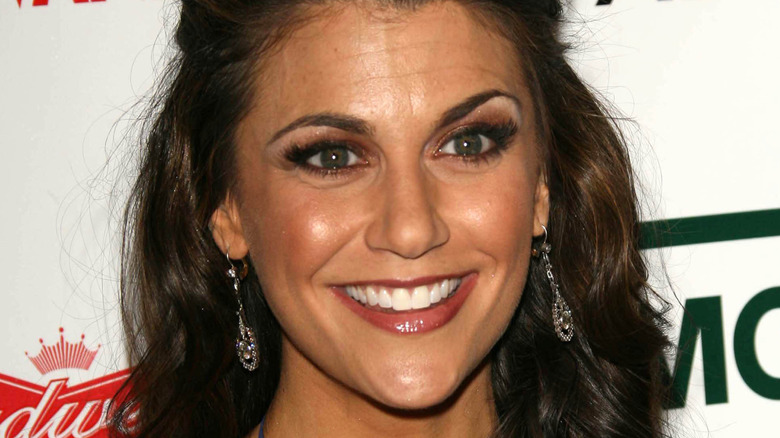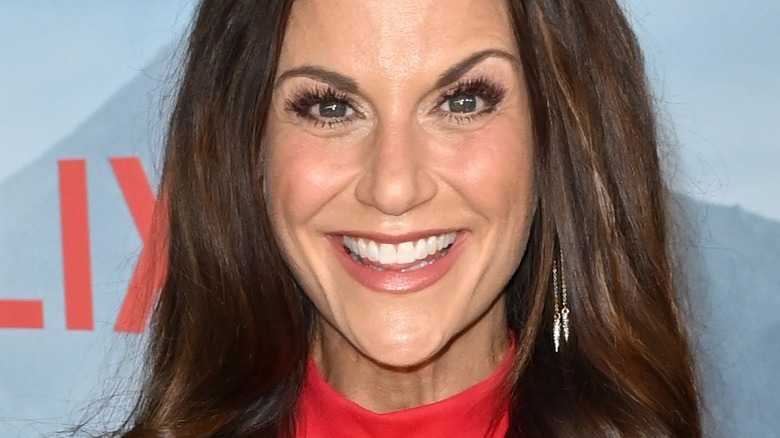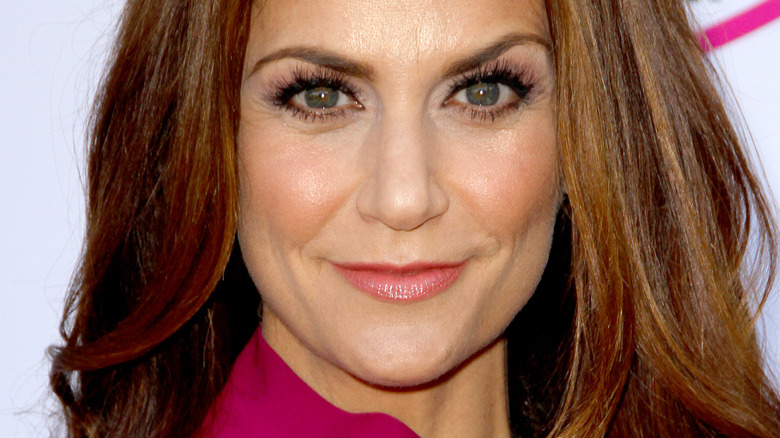The Important Fact DWTS Alum Samantha Harris Wants You To Know About Breast Cancer - Exclusive
"Dancing with the Stars" alum Samantha Harris decided to get a mammogram just before she turned 40 — the recommended age for when you should get your first mammogram. Initially, things were looking standard, but despite test results, Harris knew something was amiss.
"Let's set a baseline since I'm so darn healthy right now," Harris said in an exclusive interview with Health Digest. "The results came back clear, which is what I had assumed." Despite this, Harris found a lump in her breast 11 days later. Although the doctors said not to worry about the lump, she was suspicious. "Four months later, I finally listened to that inner voice of mine that was now screaming at me," Harris said. "I realized that sometimes we have to get really quiet with ourselves and listen to that gut instinct or — as I like to say — the inner voice."
An oncologist removed the lump from her breast, and the pathology confirmed Harris' suspicion: cancer. This would make her one of the 264,000 women in the United States diagnosed with breast cancer each year (via Centers for Disease Control and Prevention), and there were a few things that came with this diagnosis that were shocking to her.
What Harris found to be the most shocking
Although other gene mutations can be linked to breast cancer, the BRCA1 and BRCA2 genes indicate a higher risk of breast cancer (via American Cancer Society). Surprisingly, these account for only a maximum of 10% of breast cancer cases.
"To me, that was the most shocking," Harris said. "Here I was with a father and a grandmother who had cancer, and yet I had no genetic link, and it befuddled me." She realized there might have been some other factors that could have contributed to her breast cancer, like what she eats and the environment she is in.
"All of those things coming into play affect whether or not those DNA strands that might be leaning towards a predisposition to disease — whether it's cancer, Type II diabetes, heart disease — can be switched on or off," Harris said. "Epigenetic factors make a difference. How we choose to live our lifestyle."
Lifestyle changes you can make to reduce your breast cancer risk
According to the American Cancer Society, a patient might not be able to change some factors that can contribute to a higher risk of breast cancer, such as age or genetic mutations. They can, however, control other factors. For instance, drinking alcohol increases the chances of breast cancer, even when drinking in small amounts. Keeping a healthy weight also lowers the risk, particularly after menopause.
Susan G. Komen suggests including three cups of vegetables and two cups of fruit in your diet each day with as much variety as possible. Whole grains and bread from brown rice, millet, and quinoa are also good choices. A healthy diet also includes polyunsaturated and monounsaturated fats while limiting red meats, sugary beverages, and highly processed foods.
Harris has since made it her mission to inspire others to live their "healthiest healthy," which is about making small changes to reduce breast cancer risk. "The goal is to get the word out to people that we can take even better control of our bodies than we may think we can or are even able to," Harris said.
Samantha Harris now serves as the Susan G. Komen ambassador for YogaWorks Pink, which offers restorative yoga classes for those recovering from breast cancer treatment. To find out more about how you can get your "healthiest healthy," you can connect with Harris on her website, samantha-harris.com, or you can find her on Instagram and Facebook.



